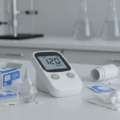Know Where You Feel Pain When You Have Kidney Problems
The kidney is one of the most vital organs in the human body. It filters waste and excess fluids from the blood, regulates blood pressure, and maintains electrolyte balance. When your kidneys aren’t functioning properly, your body often gives warning signs — and pain is one of the most common symptoms.
🔹 What Does Kidney Pain Feel Like?
Kidney pain usually starts gradually and is often felt on one side of the lower back or flank area. It can spread toward the lower abdomen. Many people mistake this for back or muscle pain, which can lead to a wrong diagnosis.
🔹 Common Areas of Pain Caused by Kidney Problems:
1️⃣ Lower Back or Flank Area
Since the kidneys are located just below the ribcage on both sides of the spine, pain is often felt in this region. The pain can be dull, aching, or sharp depending on the cause, such as infection or kidney stones.
2️⃣ Lower Back
Kidney-related pain can extend to the lower back, especially on either side of the spine. It can become more noticeable when sitting or walking for long periods.
3️⃣ Abdomen or Side
When kidney stones are present, the pain may spread from the flank to the lower abdomen. In some cases, the pain becomes severe and comes in waves, making it hard to stay still.
4️⃣ Groin or Genital Area
As kidney stones move down into the urinary tract, pain may radiate to the groin, bladder, or genital area. This is a classic sign of kidney stones.
5️⃣ Pain or Burning During Urination
If you have a kidney or urinary tract infection (UTI), you may experience a burning sensation or pain during urination. The urine may also appear cloudy, have a strong odor, or change color.
⚠️ Other Symptoms of Kidney Problems:
Swelling around the eyes, face, or ankles
Fluid retention in hands and feet
Changes in urination frequency or color
Fatigue or weakness
Nausea or vomiting
🩹 What You Should Do
Never ignore kidney-related symptoms. Drink plenty of water, limit excessive salt and protein intake, and avoid overuse of painkillers.
If you notice persistent pain or unusual symptoms, consult a doctor immediately and consider a kidney function test for proper diagnosis.
👉 Conclusion
Kidney pain is not the same as regular back pain. Understanding the difference and seeking medical help early can prevent serious kidney damage and ensure a healthier life.





